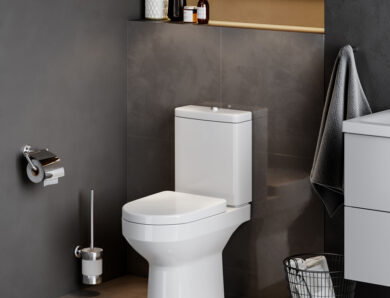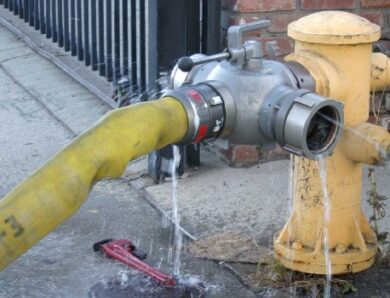How to choose a drill for a dowel: the sizes of dowels and rules of their choice
Knowledge of that, how to choose a drill for a dowel, relevant in those situations, when it is necessary to drill a hole to fix this mount. Dowels are used in those cases, when on a wall surface it is necessary to fix various subjects - furniture elements, photos, paintings, etc.. Reliability of fastening will in many respects depend on that, how well the drill is chosen to get the hole, in which the dowel will be placed.
First, choose a dowel depending on the wall material and the weight of the object, and then pick up the drill, based on the wall material and the size of the dowel
What to consider when choosing a drill for a dowel
Pick a drill to make holes, in which the dowel will be fixed, should be tailored:
- material, from which the wall itself is made, as well as its processing;
- possible mounting loads.
The drill should be chosen depending on the diameter of the fastener used. On the outer surface of the dowels, released in the factory, usually, there are markings, that allows to select correctly for them drills of the corresponding diameter.
Table 1. Selection of drills and self-tapping screws for dowels
It is important to know not only that, how to choose a dowel drill, and that, how to properly drill a hole. If you need to drill a hole in the wall for the dowel, whose diameter is 10 mm, then first use a drill with a diameter 8 mm and shock drilling mode. After the hole is drilled, the tool is replaced by a drill with a diameter 10 mm and work with them without the use of shock drilling mode. This approach will allow you to get a hole in the wall of the required diameter with smooth and neat edges.
If you need to drill a concrete wall, it is better to use a pobeditovy drill, which will cope with such strong material without special problems. The selected cutting tool should be at least on 3 mm longer than the dowel. If you ignore this requirement, the dowel will not fully enter the resulting hole, in the final part of which, usually, dust and pieces of crushed material accumulate. in addition, the shape of the bottom of the hole may not match the shape of the mounting tip.
Calculate the depth of drilling with a margin for the length of the dowel
How to attach items with light weight
In order to perform the fastening of objects, differing in light weight, use a quick mounting dowel. It is usually used to attach light objects to building structures, made of brick and reinforced concrete.
Usually, to solve this problem select the dowel, whose diameter, as well as the transverse size of the drill, is 6 mm. The length of the mount depends on that, what is the thickness of the wall is fixed with his object. If it is necessary to pick up a dowel for performance of fastening on a wall, then its length must be at least 4 cm, if the mounting is performed on the ceiling, requires mounting at least 6 cm in length.
Fastening of objects of average weight
Fixation of objects, differing in average weight, is performed by means of shock dowels. The transverse dimensions of the dowels, as well as the corresponding drills, must be at least 8 mm. The dowel chosen for these purposes must go into the wall to a depth of at least 6 cm, and when attached to the ceiling surface - to the depth 8 cm. To securely fasten an object of medium weight on the wall or ceiling (to 10 kg), must be used simultaneously 4 dowels.
Medium-weight items are convenient to hang on the dowel quick installation, if the design allows to use through fastening
Installation of items of considerable weight
For fastening heavy objects (furniture cabinets, shelves, TV stands, etc.) It is necessary to choose a dowel, also refers to the shock type. The diameter of such a dowel, as well as the transverse size of the drill, must be at least 10 mm. In walls such dowels go deep on 6 cm, and in the ceiling - on 8 cm. For reliable fastening of heavy objects, usually, use at least 6 dowels.
Anchor bolts are used to fasten the horizontal bar and stairs, the diameter of which must be at least 8 mm. In the surface of the walls such bolts are deepened on 6 cm, and in the ceiling - on 8 cm.
The order of installation of the anchor in the concrete wall
Varieties of anchor type bolts
Anchor bolts, which are used to attach various items, are divided into three main types:
- anchor bolts with nut, which after installation of fastening is tightened by a cap or horn wrench (by means of such bolts fastening of latent type is carried out);
- anchor bolts with self-locking nut, which is twisted with a Phillips screwdriver (such bolts can be used to perform fastening in those places, which are in mind);
- double-spaced anchor bolts - the most reliable fasteners, which are used to fix even very heavy objects.
The main types of anchors
How to fasten on unreliable surfaces
Very often there is a need to attach items to unreliable surfaces, which include drywall walls, building constructions in old brick houses, etc.. The following recommendations should be followed when mounting on such surfaces.
- Anchors elements are better to choose from nylon, while their diameter should be 10-12 mm. The diameter of the pobeditovy drill, by means of which the opening under fastening will be executed, should be on 2 mm less, than the transverse size of the selected dowel.
- Drilling must be performed in one go, without changing the drill, the shock mode should not be used, so as not to destroy the walls of the molded hole.
Fixing objects on plasterboard walls with a dowel-butterfly
It is important to consider the condition of the surfaces to ensure a secure fit, choose the right cutting tool and competently carry out the drilling process. Important parameters, which should also be taken into account, there are dimensions and weight of the fixed object. in addition, it is necessary to choose the right self-tapping screw for the dowel, to ensure secure attachment of the object to the surface of the wall or any other building structure.


